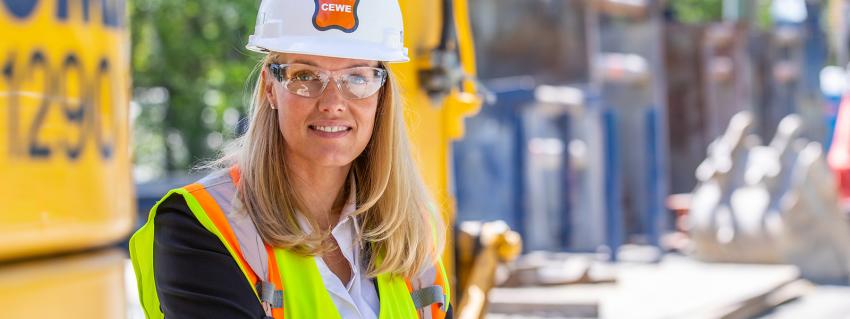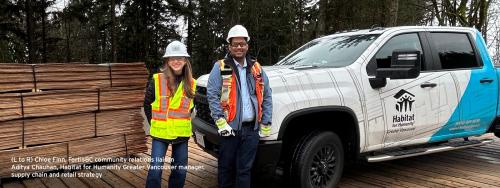The shortage can be tackled in part by utilizing a largely untapped resource according to Kirsten Wilson, president of Jack Cewe, a civil construction contractor working on the FortisBC Gas Line Upgrades project.
“The solution is to hire more women,” she says. “We need to prioritize hiring them, because they’re under-represented in the construction labour force.” Kirsten and her team are working hard to hire more women, but she says there are challenges that must be addressed head-on within the industry before their numbers will improve.
The biggest challenge facing women who enter the trades is the perception that they’ll experience a lack of support on the worksite, says Kirsten. She believes the key to improving worksite culture is through education.
“If you teach your current work force to treat each other with respect, it’s easier to retain new employees of diversity because they will be coming into a welcoming and respectful environment,” she says. “Employees need to know they’ll be supported by the company if they experience bullying and harassment.
Many hiring managers tend to hire who they know, preventing women from getting their foot in the door. The fact is, women can do this work and you don’t need to be male to have a successful career in construction.
And before a woman can even start work on a construction site, she first needs to get hired.
Kirsten explains gender stereotypes can be common within the construction industry and are a major hurdle for women. “At every level in the industry, we need to counter the belief that work in the trades is for men only,” she says. “Many hiring managers tend to hire who they know, preventing women from getting their foot in the door. The fact is, women can do this work and you don’t need to be male to have a successful career in construction.”
Melanie Kilpatrick, a FortisBC project director who also led the FortisBC Gas Line Upgrades project for five years, knows first-hand what it’s like to be a woman working in a male-dominated profession.
Project managers on major construction projects have traditionally been men, but Melanie says FortisBC recognizes what’s truly important. “Having the skills, knowledge and experience to do the job is what matters,” she says. “FortisBC has always been good at recognizing expertise and providing opportunities to those who are suited for them.”
In 2018, women represented just 12 per cent of the labour force in B.C.’s construction and maintenance industry, and less than 4 per cent of those workers were employed in direct on-site project construction.
Within the same timeframe, approximately 10 per cent of the full time construction jobs on the FortisBC Gas Line Upgrades were held by women—a number FortisBC is working to increase. Fostering an inclusive and diverse workforce is a company-wide priority for FortisBC, not only because it’s the right thing to do, but for the benefits we believe it can bring the company.
Four of the women who worked on the project were employed by Jack Cewe—including B.C.’s first female paving foreman. Kirsten says the potential for women to work in the trades is endless, but first we have to find them and convince them that the construction industry is supportive of them.
"As employers and business leaders, we need to take ownership of the lack of women in these jobs,” she says. “And we need to bring male workers and managers into the conversation. Without men, we’ll never fix this problem."



